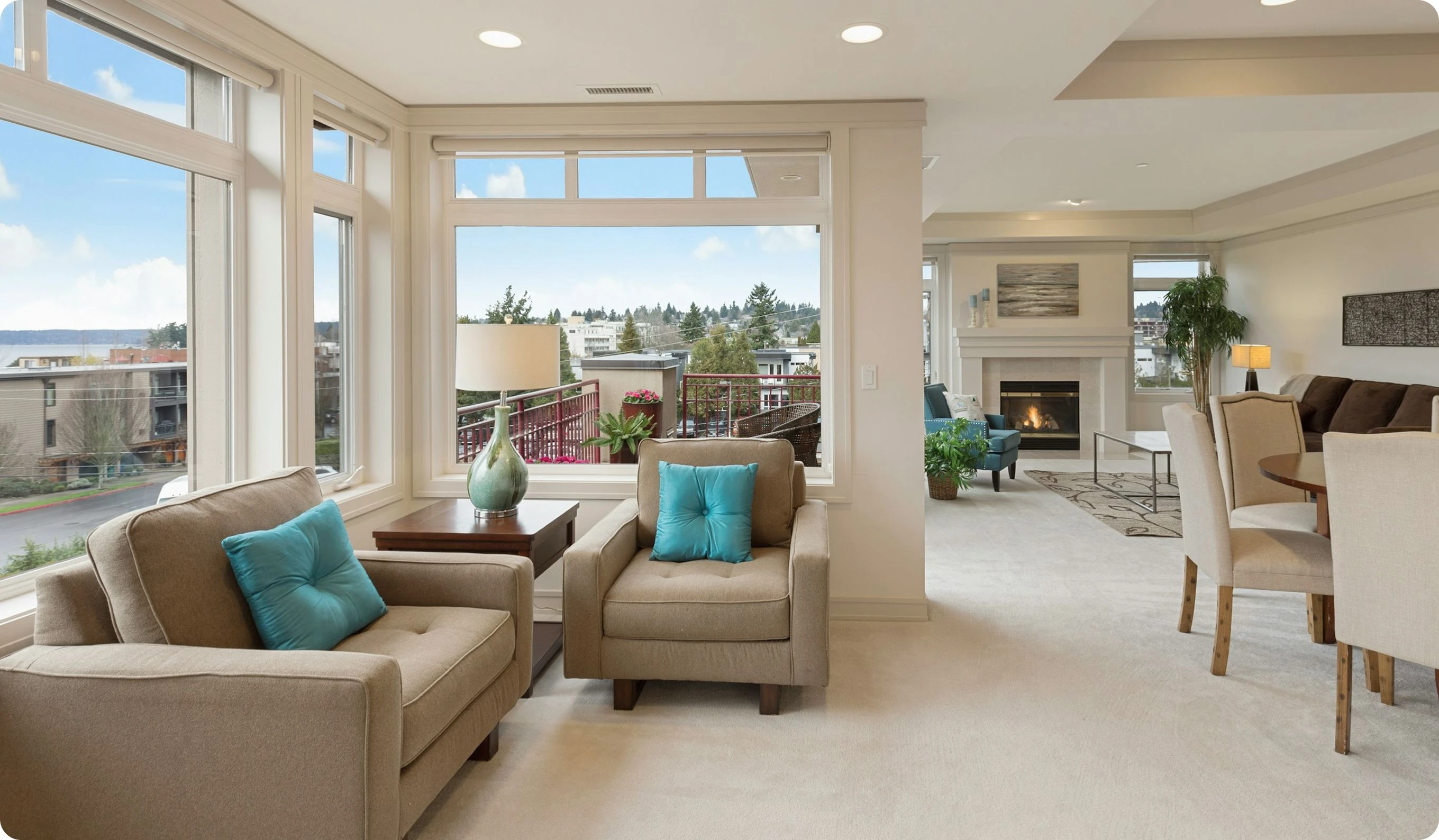Commercial Property Listings in PhilippinesAffordable housing acrosscoastlines and cities

Best offers
in Philippines
Benefits of investment in
Philippines real estate
Affordable city real estate with strong rental use
Metro Manila offers condos in central business districts at entry-level prices with strong demand.
Growing middle class and remittance economy
Domestic tenants, overseas workers, and urban migration drive continuous housing needs.
Foreign ownership allowed in condominiums
Foreigners can own units in registered condo developments with full rights.
Affordable city real estate with strong rental use
Metro Manila offers condos in central business districts at entry-level prices with strong demand.
Growing middle class and remittance economy
Domestic tenants, overseas workers, and urban migration drive continuous housing needs.
Foreign ownership allowed in condominiums
Foreigners can own units in registered condo developments with full rights.

Useful articles
and recommendations from experts
Unlocking Potential: Commercial Real Estate in Philippines
Urbanization, Demographics & Demand Drivers
Commercial real estate in Philippines has evolved into a dynamic landscape shaped by rapid urban growth, shifting demographics and diverse tenant requirements. Metro Manila remains the focal point for investors, with Makati’s central business district and Bonifacio Global City leading in grade-A office developments, high-end retail galleries and mixed-use complexes. Yet secondary centres such as Cebu, Davao and Iloilo are gaining traction: Cebu’s IT parks and business outsourcing hubs draw multinational firms seeking cost-effective workspaces, while Davao’s expanding tourism industry supports hospitality assets and lifestyle retail. A youthful workforce entering the labor market, combined with a rising middle class and an increasing number of expatriate executives, fuels demand for flexible coworking spaces, green-certified buildings and amenity-rich environments. Emerging satellite townships around major highways offer comparative affordability and attractive yield spreads above established cores, reflecting both lower entry costs and strong occupancy levels. Investors who align their strategies with these urbanization and demographic trends can capture sustained rental growth and mitigate concentration risk in a single metro area.
Regulatory, Tax & Financing Framework
Understanding the legal and financial architecture is essential for successful investment in commercial real estate in Philippines. Under the condominium legislation, foreign nationals may hold up to forty percent of units in a project, while long-term leasehold structures—often extending to fifty years with renewal options—provide secure tenure for office towers, retail malls and mixed-use developments. Establishing a domestic subsidiary or joint venture with a local partner remains the prevailing approach to navigate ownership restrictions and streamline transaction processes. Incentive programs under the Philippine Economic Zone Authority and Board of Investments extend income-tax holidays, duty-free importation of capital equipment and preferential corporate-income tax rates, enhancing after-tax yields by a relative margin. Financing is widely available through local banks and regional lenders, typically offering loan-to-value ratios in the mid-sixty-percent range and spreads that track regional benchmarks. For larger ventures, project-finance and mezzanine-debt structures are gaining popularity, allowing investors to optimize leverage while preserving conservative debt-to-equity ratios. Early coordination with legal advisors, tax specialists and banking partners ensures efficient capture of incentives, timely registration of titles and robust capital structures that withstand local market cycles.
Infrastructure, Connectivity & Emerging Corridors
Infrastructure investments are redrawing the map for commercial real estate in Philippines, unlocking new corridors of growth and reshaping tenant priorities. The expansion of metro rail lines in Metro Manila—complemented by planned subway projects—reduces travel times from peripheral business parks to central districts, driving rental premiums for developments within walking distance of stations. High-capacity expressways linking northern and southern regions have transformed logistics parks near major ports into viable distribution hubs, catering to the booming e-commerce and manufacturing export sectors. In emerging freeport zones around Clark and Subic Bay, investors benefit from special customs regimes and streamlined permitting, while dedicated airport expansions in those areas promise to support future mixed-use townships. Secondary cities with upgraded transport terminals and improved intercity bus networks—such as Cebu’s international port and Davao’s coastal highway—are seeing upticks in office leasing and retail occupancy. Value-add prospects include converting older retail podiums into lifestyle destinations with coworking lounges and food-hall concepts, or repurposing underutilized office blocks near transit nodes into flex-space facilities. Staying attuned to infrastructure timelines and funding certainty is critical: properties aligned with confirmed completion phases can command rent uplifts of several percentage points, whereas those bypassed by key projects may face prolonged leasing periods and adjustment of yield assumptions.
Asset Classes & Strategic Value-Add Opportunities
The spectrum of commercial real estate in Philippines encompasses core office towers, retail malls, logistics warehouses, hospitality assets and mixed-use developments—each offering unique risk-return profiles. Core-plus office assets in Metro Manila maintain stable income streams under long-term leases with multinational tenants, while suburban business parks provide higher yield spreads driven by cost efficiencies. Lifestyle malls anchored by experiential brands and upscale dining capture foot traffic from urban professionals and tourists, particularly in catchments with growing disposable incomes. Logistics and warehousing facilities near Manila Bay and Cebu Gateway command resilient demand from third-party operators and light-manufacturers, underpinned by the country’s export-oriented economy. Hospitality properties—including boutique hotels in historic districts and resort complexes in coastal regions—deliver episodic peaks aligned with conference seasons and leisure travel. Mixed-use schemes that integrate office, retail, residential and hospitality components are increasingly sought by investors aiming for diversified revenue streams and reduced cyclical exposure.
Value-add plays hinge on ESG enhancements and adaptive reuse: solar-energy installations, water-conservation systems and green-building certifications can unlock rental premiums and align assets with tightening sustainability mandates. Repurposing low-rise office parks into medical-suite complexes or data-center campuses in areas with reliable power and fiber-optic connectivity taps into niche demand with above-average yield potential. In downtown cores, converting heritage structures into boutique hotels or co-living residences satisfies growing interest in lifestyle-oriented real estate. Investors targeting special economic zones can leverage duty-free import status and enterprise incentives to underwrite developments with lower initial capital costs. Across all classes, aligning asset selection with tenant profiles—whether BPO firms seeking flexible floorplates or retail brands requiring experiential backdrops—ensures optimized occupancy and value appreciation over the hold period.
Commercial real estate in Philippines thus presents a multifaceted landscape, rich with core income plays and strategic value-add opportunities across metro hubs and emerging corridors. Success demands a holistic approach: integrating demographic insights, navigating regulatory and tax incentives, structuring resilient financing solutions and aligning asset acquisition with infrastructure rollouts and tenant specifications. By partnering with seasoned local advisors—urban planners, legal counsel, tax specialists and leasing brokers—investors can convert the country’s growth dynamics into resilient, income-producing portfolios that outpace regional benchmarks and adapt to evolving market trends.
